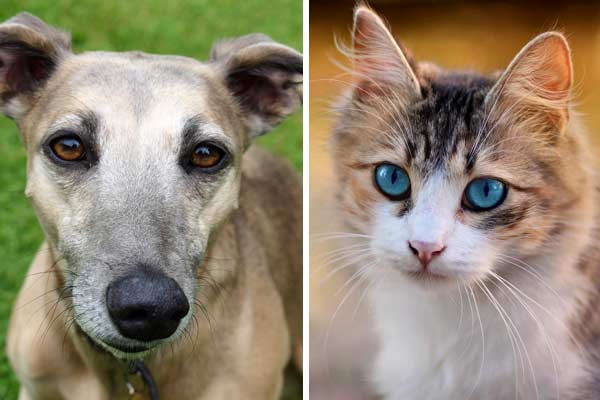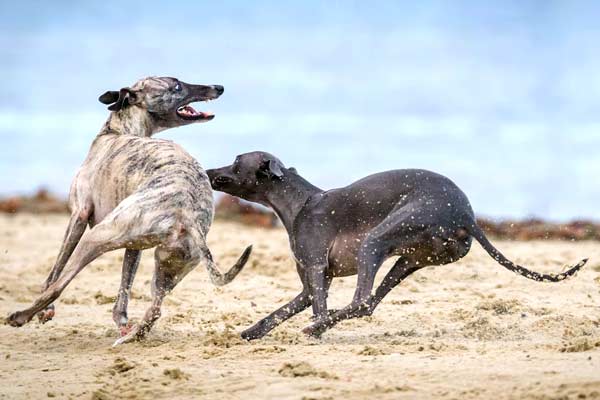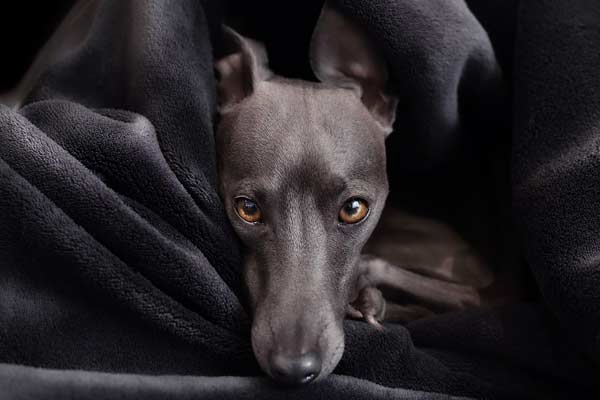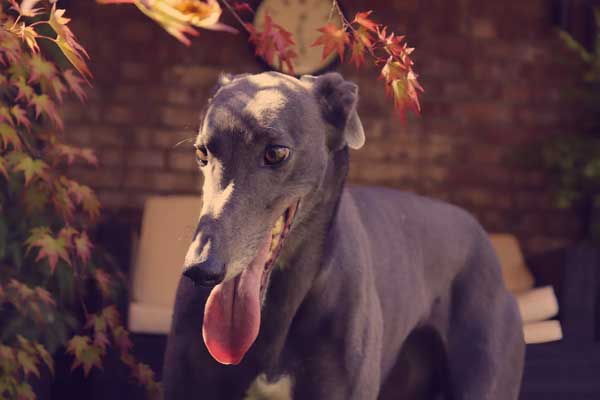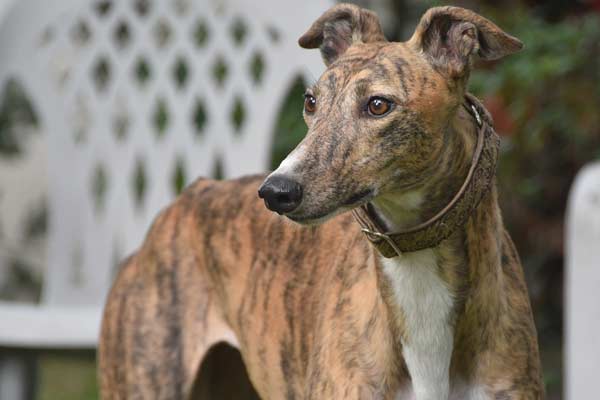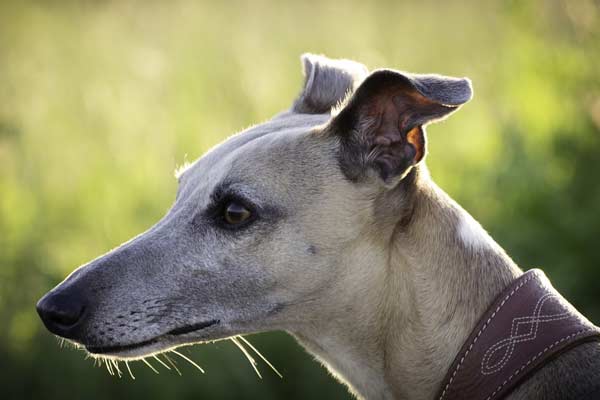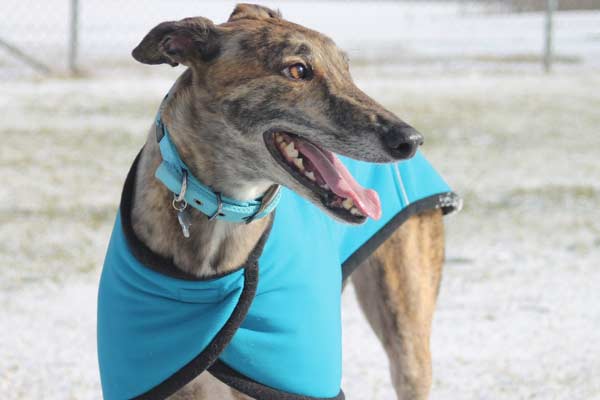Are Greyhounds Good with Cats: Teaching a Very Old Dog New Tricks
If you are considering adopting a retired Greyhound, you may wonder if it is safe to introduce the dog to your cat. Perhaps your cat had a canine pal in the past and is exceptionally dog-friendly.
Will a Greyhound off the track accept your cat or torture it relentlessly? Should you invest in a puppy and raise it around your cat? The bottom line is, “Are Greyhounds good with cats?”
Introducing a retired Greyhound to an unfamiliar dog is not a simple matter. Greyhounds frequently see animals smaller than foxes as prey. Whether this breed will be good with a cat is even more unpredictable.
These speedy dogs live to chase down small furry fast-moving critters. However, Greyhounds fall into three categories concerning cats, and some are pretty good with felines. Others improve with familiarity and training.
Greyhound’s background does not support cat-safe behavior
Before Greyhounds hit the racetrack, they coursed game like hares, deer, foxes, and smaller game. Ancient civilizations in Egypt and the Middle East selected the fastest dogs.
Unlike baying scent hounds, Greyhounds hunted by sight and outran their quarry by reaching speeds of 35 to 45 miles per hour.
Most Greyhounds have a tremendous predatory instinct. While this usually manifests as an exciting bout of chase with larger dogs, it culminates in vanquishing small animals like squirrels and rabbits.
So what does a Greyhound think of a cat?
Domesticated cats are mid-tier predators. They are capable hunters of small animals and birds but are also potential prey for alpha predators.
Cats are well aware of their vulnerability; thus, their instinct is to run from larger dogs. Only capable of short bursts of speed, cats typically run to the closest hiding place or tree.
If caught in too much open terrain or a house without a convenient getaway, a cat is an easy prey animal for a Greyhound intent on seeing it.
Because of individual personality differences in both animals, some Greyhounds can be great with dog-friendly cats.
What is a dog-friendly cat?
A dog-friendly cat is not always amiable but is a feline that does not run from dogs.
Some cats stand their ground but are aggressive. They may growl, puff fur, or swing at a dog’s face. While such cats are not necessarily effective against or safe from breeds like terriers or Rottweilers, this bravado is generally enough to back down a timider Greyhound.
The desirable option is the cat that has been socialized with dogs and approaches them with a friendly demeanor.
Dog-friendly cats are more secure than most because they do not trigger a dog’s chase instinct by running. It would help if you always matched a dog-friendly cat with a cat-tolerant or cat-trainable dog.
How do experts classify a Greyhound’s temperament with cats?
Cat Tests for Greyhounds
When you adopt a retired racing Greyhound, a reputable organization must test its disposition.
An adoption agency will also test a dog’s compatibility with other animals to increase the number of retirees that find suitable homes.
Whether a majority of Greyhounds can live with cats or whether most of them are too dangerous for small pets depends on the testing method that the adoption facility uses.
With stress challenges, most Greyhounds have a prey drive that is too high to coexist with cats safely.
However, more advanced facilities take the approach that Greyhounds behave much differently indoors than outside.
Tests specifically aim to see if Greyhounds can tolerate cohabitating indoors with a housecat.
In these cases, cat tests for Greyhounds are conducted indoors in a small space. Cats do not get much room to run.
Greyhounds always wear a leash and a muzzle when they take the test. Each dog performs its test individually.
The introduction occurs with the cat in a crate unless it is remarkably tolerant of dogs and not prone to move around much.
Once the dog is calm with the cat in a kennel, the cat is released to move about the room slowly.
If possible, the Greyhound is allowed to sniff the cat from the rear, just as it would another dog. The handler’s job is not to enable the dog to to bang the cat with its muzzle or pounce on it.
If the dog is calm again, the last step is to motivate the cat to move more quickly or leap onto a higher surface.
This provides the ultimate test of the Greyhound’s ability to control its prey drive and respond to commands.
Based on the dog’s response to each phase, the tester will place it into a category that reflects its suitability for households with cats. Personnel with a specific skillset group Greyhounds into three categories regarding cats.
Cat Safe Greyhound
Cat-safe Greyhounds have a lower prey drive than their peers. When exposed to cats, they lose interest once they make an identification.
When the tester stimulates the cat to move quickly or jump onto a higher surface, a cat-safe Greyhound may perk up initially but promptly lose interest again. Cat-safe Greyhounds are also called cat-tolerant.
Cat Trainable Greyhound
Cat-trainable Greyhounds initially show more interest in cats than cat-safe dogs and have a higher prey drive.
The goal of testing them is to trigger the cat to slap the dog with a paw to the face. A cat-trainable Greyhound will back off immediately and exercise strong avoidance behaviors.
Further attempts to introduce the Greyhound to the cat will be met with resistance from the dog. Chances are the Greyhound will take memories of the encounter to future meetings with cats.
This is either a Greyhound with an exceedingly low prey drive or one that learned a lesson in its introduction to cats. It is helpful that the cat is so self-assured.
The Greyhound is also a submissive dog, allowing all other household pets to crowd it off its food.
Most importantly, the video shows how Greyhounds can coexist happily with cats under the right combination of factors.
Not Cat Safe Greyhound
Some Greyhounds are not safe around cats under any circumstances. They become excited at seeing a cat and will not settle down even after sniffing. If a cat slaps them, their excitement grows.
A Greyhound that focuses strongly on a cat and ignores verbal commands or firm touches along its sides is not a suitable candidate for a household with a feline pet.
Are Greyhounds good for cats?
Greyhound Crossroads estimates that 75% to 80% of Greyhounds can live safely and peacefully with cats.
Success depends on multiple introductions (socialization) with different cats, serial testing (repeat cat testing in the facility and the home), carefully orchestrated meetings between the prospective Greyhound and the established pet cat, and continuous supervision.
A Greyhound should wear a basket muzzle until you establish that your dog will act appropriately when your cat moves quickly.
This means your Greyhound will not immediately chase your cat or jump to attention and watch intently.
It is safest to separate your Greyhound and cat when you cannot supervise them. There are a few things you should never do to prevent injury to your cat.
- Do not allow your dog outdoors with your cat – the predatory drive of a dog is greatly enhanced outside.
- Do not allow your dog to chase any cats – the habit is easily instilled and can render your dog forever unsafe for all cats.
- Do not adopt a Greyhound if your cat is timid or a runner – exceptions are listed below, but this is your safest alternative.
- Do not introduce your Greyhound to a strange cat or small dog without a muzzle and a leash.
- Always introduce Greyhounds to cats and test them one at a time – pack instincts are powerful and enhance prey drive and excitement.
- Always conduct cat introductions and tests when your Greyhound is in a calm state of mind – initial excitement will invite failure because it triggers prey drive.
- Always introduce your cat as it stands or sits on the ground – picking a small animal up makes it look like prey or a toy to your Greyhound.
Introducing Your Greyhound to Your Cat
When you are ready to introduce your Greyhound to your pet cat, proceed slowly and do not skip the steps.
- Make sure the prospective Greyhound has been tested with multiple cats and has received a cat-safe or cat-trainable status – one test is not the holy grail for any dog.
- Use a muzzle on the Greyhound.
- Leash the dog so you have control.
- Introduce the animals in a small area – every introduction should be conducted as another cat test for your dog.
- Make sure the Greyhound is not excited from something else – saw a squirrel earlier or was playing ball.
- If you have a fearful cat, the adoption agency can recommend a Greyhound with an exceptionally low prey drive (which has been tested to prove it)
If your Greyhound reacts poorly to an introduction, try again in a day or two in a different area. Be patient above all else.
Your Greyhound likely chased a mechanical lure for much of its life and never saw a cat.
It needs time to learn the difference between a cat and a rabbit or lure and that the cat is off-limits.
